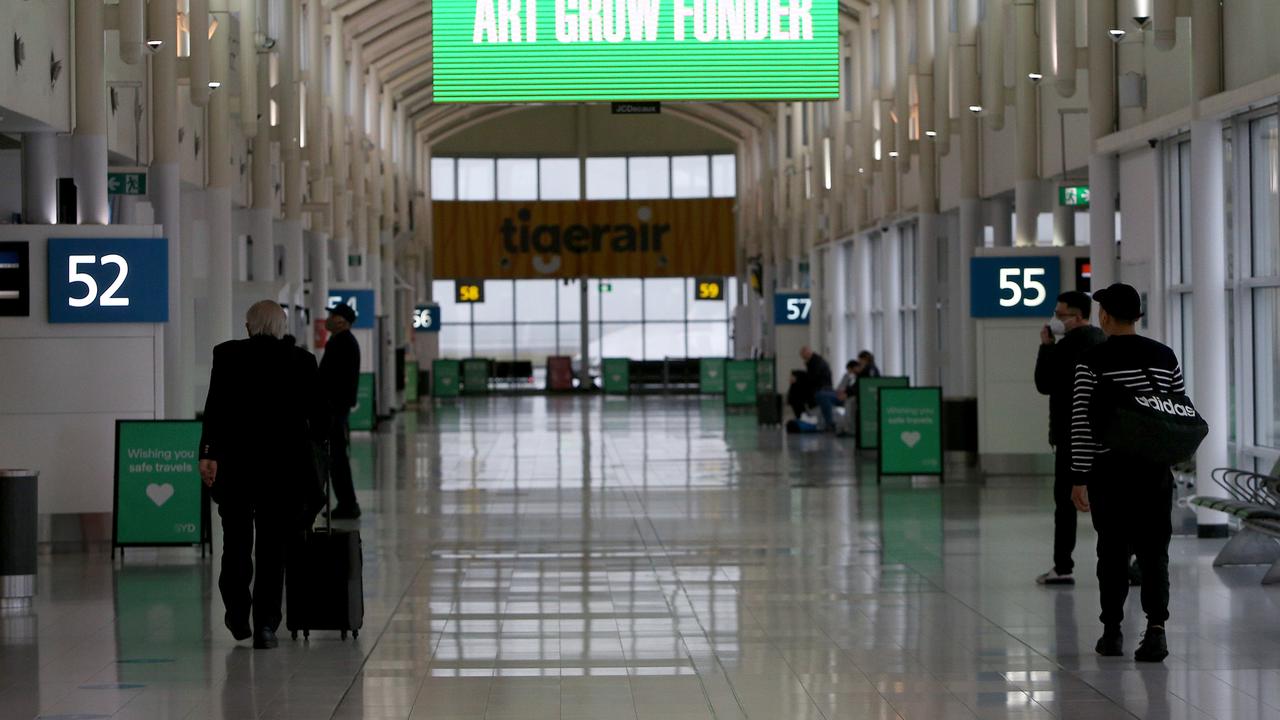A tale of two Budgets
TODAY’S state Budget and next week’s federal Budget will be like day and night — or rather, the first will be written in black ink, the other in red, writes Terry McCrann.

Terry McCrann
Don't miss out on the headlines from Terry McCrann. Followed categories will be added to My News.
TODAY’S state Budget and next week’s federal Budget will be like day and night — or rather, the first will be written in black ink, the other in red.
Tim Pallas’s Budget will unveil surpluses as far as the fiscal eye can see, while Scott Morrison’s will show unending — albeit, at least (forecast) falling — deficits.
The Morrison Budget will certainly be deep in the red on the traditional Budget presentation of bottom-line “underlying cash deficit”; and still in the red but not quite as deeply if the spending linked to “good debt” is excluded.
Now, apart from the somewhat “odd” political contrast of a Labor state treasurer presiding over unending surpluses and a Liberal “debt-and-deficits-are-evil” federal treasurer doing the exact opposite, there are a series of more substantive dynamics.
First, the Victorian Budget would also be deep in the red if it was produced on the same basis as the federal Budget. That is to say if all cash spending was just deducted from all cash revenues.
But state Budgets — across the nation and in a totally bipartisan way — have long been prepared on the basis of just reporting concurrent (operational) spending. Capital investment — infrastructure — and the debt to fund it, is separated.
It is this that Morrison is now partly aiming to copy.
So while today’s state Budget will forecast a $1 billion-plus surplus for the coming year, if it was presented “the federal way”, it would show instead a deficit of well over $3 billion; and similar deficits as far as the fiscal eye would then see.
This is not to argue it should be done “the federal way”. The current method makes accounting, fiscal and indeed political sense. And by “political”, I don’t mean “politically advantageous”, but “politically sensible”: as it takes silly and destructive politics out of it.
I need to add at this point, because of this presentational method, a state Budget — like WA’s — that is actually in the red, really is in seriously bad shape. It would indicate the accumulation of extra (bad) debt on top of extra (if you are lucky, good) debt.
Second point: only two state Budgets are in seriously, credible, good shape. They are Victoria and NSW. We will see NSW’s next month, but the 2016 numbers pointed to sustained large surpluses and this year’s will be at least as good.
Further, with the sole and outstanding exception of WA, those other state Budgets will be in poor shape despite getting huge handouts from the federal government. That is to actually say, from taxpayers in NSW, Victoria and most “generously” of all, WA.
WA and its citizens get a very poor deal out of the GST. Currently, the state is getting back just 34c in every dollar of GST revenue raised in the state and sent to Canberra. If it was getting the full 100c in the dollar back its Budget would join Victoria’s and NSW’s in the black.
There is one big reason Victoria and NSW are in fiscal heaven: their booming property markets, which are pouring billions into state coffers via, first, stamp duty on property transactions, and then secondly, on higher land tax when those sales translate to higher property values (on which land tax is based).

Treasurer Pallas is now moving to reap — and I used that word advisedly — an additional gain, by having those rising property values flow more quickly into his tax receipts by switching from two-yearly to annual property valuations.
Now, the GST was supposed to give the states their much needed “growth tax”. Apart from the “WA problem” — where it’s become a negative growth tax — it’s been a very slow grower because of changing consumer spending patterns.
It’s not only the smartphone — back in 1999, it didn’t of course exist — but the explosion in spending in areas that are specifically excluded from the GST, like education and especially health.
The great state growth tax, but only in two states, is stamp duty. This is thanks in part to something completely out of the control of any government in Australia, state or federal — the way Sydney and Melbourne have become part of a premium global real estate market.
But it is also thanks in part to a number of things that are either directly in the control of government or have been promoted by government.
An example of the first is the tax structure that encourages investment in property; an example of the second is the huge migration program that has sent demand for housing in Melbourne and Sydney soaring.
And all of it comes together at yet another layer with the way money has poured into development of multistorey apartments, and on into the NSW and Victorian state Budgets.
What should this be telling us? The first is the pointlessness of looking at individual Budgets in isolation. They are all interconnected, on a series of complex levels.
The second is the exposure of the multidimensional reform we need. We need root-and-branch reform of tax, right across both the state and federal levels. But reform that also integrates tax into all other policies and policy dynamics — like immigration, like infrastructure.
Instead, today we are going to get a state Budget with surpluses and much gloating; and next week a federal one with deficits and excuses: both, all contemporary spin and no future-creating substance.
INDEX THAT MEASURES OUR FUTURE
WHERE goes Australia?
The answer, ultimately, lies in where goes a line in a graph the Reserve Bank puts out every month — somewhat oddly, just before its monthly interest rate meeting.
This is its “index of commodity prices”. It broadly measures the level of the blended prices we get for our commodity exports.
That is to say, what we get for the great bulk of our exports, apart from tourism and education. We don’t export much else, and certainly not in future, Holden cars.
Yes, the index was down in April, for the second month in a row. But it was still up 38 per cent over the year — thanks to coal and iron ore prices.
Yes, those prices are down from their (rather spectacular) recent peaks, but they are still up nicely from where they’ve been in recent years.
The core question is where do those prices now go, not in the next few months or even the next couple of years, but over the next decade and more?
If they stay broadly where they are now, we will be getting what are very good prices in historical terms — between two and three times what we were getting through the 1990s and the first part of the 2000s.
And we would be getting those prices over much higher actual export volumes, translating to tens of billions of extra dollars every year. We would actually pay our way in global markets (and, more basically, pay for our imports).
That would also speak to a world that was operating in pretty good shape: a world that is certainly not in deep or sustained recession.
Equally, we do not really want to go back to a crazy boom, which is simply unsustainable and would take us (and the world) to the edge of an inevitable precipice.
As for today’s meeting, it will leave the RBA’s official rate sensibly and desirably unchanged.
We will see why more deeply with the RBA’s updated forecasts on Friday.
The two-day Fed meeting starts in Washington tonight. Its rate decision will be announced early Thursday morning our time.
Originally published as A tale of two Budgets


